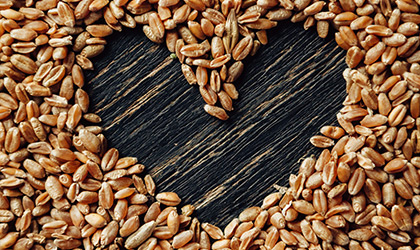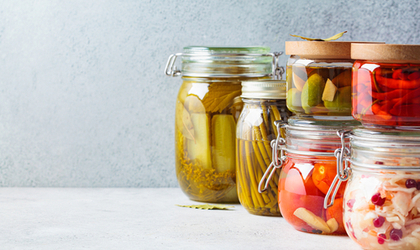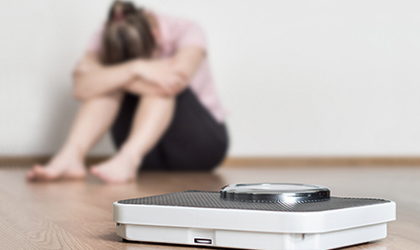
Dodgy back? Creaky knees? Stiff shoulders? Many of us are quick to assume general body aches and pains are solely down to age. And while this may be true in part – some may start to experience physical decline as we age – it’s certainly not the full story. In fact, there’s a strong case to suggest ageing doesn’t cause a decline in mobility; it’s a decline in mobility that causes ageing.
Of course, the petri dish of modern life isn’t exactly conducive to our body’s needs. Shockingly, most UK adults spend 9 hours a day sedentary: sitting behind screens, driving, commuting to work, or lounging at home.¹ The problem is that our sedentary lifestyles don’t just risk early mortality; they affect our ability to move, too. Fortunately, we can make changes to help improve our flexibility and mobility.
What are the benefits of flexibility??
There are countless reasons why flexibility and mobility are indispensable to good health and wellbeing. (And it’s not just because doing the splits is cool). From better posture to fewer injuries, here’s why you should focus on limbering up as you age.
Improved posture
Endless deskwork and screen time can throw your posture out of whack. Your neck seizes up. Your shoulders hunch. Your back niggles. Improving your flexibility can correct your alignment and help to straighten out your posture.
Fewer injuries
Poor mobility and tight muscles are often behind those irksome, everyday injuries. You know the kind that takes you by surprise: bending over to pick something up, moving the wrong way in bed, heck, even sneezing. Studies suggest flexibility training increases your range of motion, which may reduce the risk of injuries.² Improving your flexibility may also minimize performance-related injuries.³
Pain reduction
Flexibility training lengthens and opens your muscles, helping to reduce chronic aches and pains. (Added bonus: you’ll probably experience fewer muscle cramps, too).
Better balance
Inflexibility and poor balance often go hand in hand, which can increase the risk of falls in older adults.? But improving balance and flexibility means you’ll feel more confident on your feet.
Increased physical performance
Increasing flexibility allows for greater movement in your body, meaning you’ll be able to perform better physically. Want to run faster? Improve your grappling game in Brazilian Jiu-Jitsu? Serve the ball harder in tennis? It’s time to stretch.
Mood enhancement
Any form of movement nourishes your mind. And regularly engaging in activity that stretches the body – which often combines dynamic exercise with meditation, breathing and mindfulness – can induce feelings of relaxation. No wonder yoga is often recommended to support your overall mood and wellbeing.
Movement
Improving your flexibility and mobility doesn’t just happen in one yoga class. If you want to remain swift-footed and loose-limbed as you age, you need to move regularly. While all forms of movement look after your body, some stand out more than others.
Mobility vs. Flexibility
A quick note on semantics. The terms ‘flexibility’ and ‘mobility’ are often thrown around in the health and wellness space. Confusingly, they aren’t the same thing.
Flexibility is the muscle’s ability to open and lengthen passively. Performing static (still) stretches using props, body weight, or limb support improves muscular flexibility. Mobility, contrastingly, is related to the joint’s ability to move actively through its full range of motion. Think shoulder rolls and neck circles. You can’t have good mobility without good flexibility.
What are the risks of being inflexible?
According to the evolutionary biologist professor at Harvard, Daniel Lieberman, humans were literally ‘born to run’; it’s what shaped our physiology.? In many respects, running engineered the Sapiens. We only need to look at our knees, pelvis, core, and head shape to understand that we weren’t designed to be sedentary.
And yet, most of us spend the best part of the day sitting – at our desks, in front of screens, commuting to work, and eating in dining chairs. Experts now believe prolonged periods of sedentariness are responsible for a host of health conditions, including those related to mobility and flexibility. And no wonder. In very simple terms, inactivity means we’re not satisfying our evolutionary role as moving, vital beings.
How to improve flexibility and mobility
Sometimes, it can feel like modern life doesn’t make it easy for us to move. And this is especially true for office workers and city dwellers. But you don’t have to live a natural, nomadic lifestyle to stay active. There are many ways to incorporate more activity into your day; it just comes down to being a movement opportunist.
Change your habits
-
If you commute on public transport, try to avoid sitting down
-
Have a chat with your HR manager to discuss using a standing desk
-
Get up from your desk and move around every 25 minutes
-
Take all calls standing or walking
-
Invite your co-workers into walk and talk meetings
-
Take the stairs at every opportunity
Use it or lose it
Davis’ Law of ‘use it or lose it’ is pretty self-explanatory. If you don’t exercise, you run the risk of diminishing your hard-earned flexibility and mobility. That’s why staying active is vital as you get older. Based on all the scientific evidence, it’s a decline in movement that leads to creaky shoulders and dodgy knees – not the other way around.
Find a dynamic exercise that works for you
Yoga, Pilates, and Tai Chi make up the triumvirate of flexibility-focused exercise. (Basic stretching also counts, of course). These activities elongate and stretch the muscles. Over the next few pages, we’ll be taking a deep dive into each of them.
Try a warm bath
One hurdle you have to overcome to improve your flexibility is your muscles’ natural protective response. Theoretically, however, if you relax your muscles in a warm bath or shower, you could potentially get more out of your stretching sessions.
Consider Epsom salts
Of course, your post-workout game is also important. Rich in natural minerals, Epsom salts help relax aching muscles when added to warm water. These guys are the perfect addition to complement your flexibility training.
Practice regularly
There’s no magic bullet to improve your body’s range of movement. It takes time, patience and dedication. Ever noticed how stiff your body feels when you’ve taken a hiatus from exercise? Following a regular flexibility and mobility training programme will help keep your muscles and joints in good working order.
Try hanging upside down
From an evolutionary standpoint, we’re an arboreal (living in trees) species. We evolved to hang, swing, and climb. We still have those abilities. But we’ve forgotten how to use them, with many of us spending years hunched over screens. When we incorporate hanging upside down into our daily lives, we can improve our flexibility, mobility and overall alignment.
Don’t forget your feet
In the same way you need good tyres and wheels for your car, you also need a strong foundation for the rest of your body. And that’s why your feet are so important. The feet are your basic support for running, walking, balancing and climbing. Without them, you’ll run into all kinds of issues
(pun intended). There are 26 bones, 33 joints and over 100 muscles, tendons and ligaments in your feet. They also contain up to 200,000 receptors, which feed information back to your brain and ensure your body moves efficiently. Changing how your feet behave has a huge impact on how your brain behaves with movement.
Having a solid foundation means you can support ankle mobility, knee stability, hip mobility and pelvic stability. Ultimately, it’s what allows you to build a perfectly aligned frame. That’s why it’s a good diea to reconsider your choice of footwear, especially high heels. When you wear tight-fitting shoes that narrow the toes – especially the big toe, which is an important lever – it affects your overall alignment and balance. Beyond this, heels affect the natural position of the foot-ankle complex and alter your posture. Flat shoes, on the other hand, evenly distribute the body weight throughout the foot.
‘Rewilding’ is particularly in vogue at the moment. But the concept of rewilding doesn’t just mean getting outdoors more; it can help you reawaken your innate natural abilities. And rewilding your feet can support your movement, balance and posture.
-
Free your feet at home
-
Go barefoot in natural landscapes, like your garden, the park, or the beach
-
Consider gradually transitioning to barefoot shoes
-
Consider placing a tennis ball under your foot and roll your foot over the ball to help improve ankle movement
Want to find out more?
Read more on about what food can support flexibility and mobility
References:
-
Why we should sit less. (2021). Available online: https://www.nhs.uk/live-well/exercise/why-sitting-too-much-is-bad-for-us/
-
Stathokostas L. et al., Flexibility training and functional ability in older adults: a systematic review. Journal of aging research. 2012;306818.
-
Gleim. G., McHugh M., Flexibility and Its Effects on Sports Injury and Performance. Sports Medicine. 1997;24(5):289-299.
-
Iwamoto J. et al., Preventative effect of exercise against falls in the elderly: a randomized controlled trial. Osteoporosis International. 2008;20(7):1233-1240.
-
Humans Were Born to Run, Fossil Study Suggests (2021). Available online: https://www.nationalgeographic.com/science/article/humans-were-born-to-run-fossil-study-suggests
You Might Also Like

Olivia
Olivia Salter has always been an avid health nut. After graduating from the University of Bristol, she began working for a nutritional consultancy where she discovered her passion for all things wellness-related. There, she executed much of the company’s content marketing strategy and found her niche in health writing, publishing articles in Women’s Health, Mind Body Green, Thrive and Psychologies.
View More






